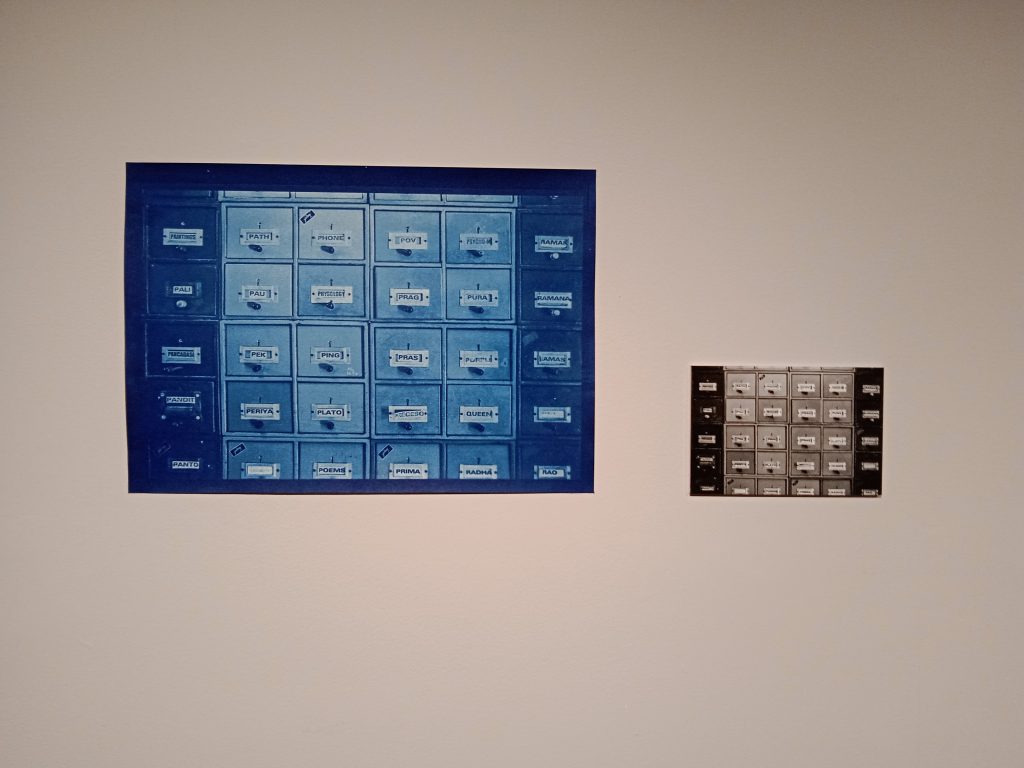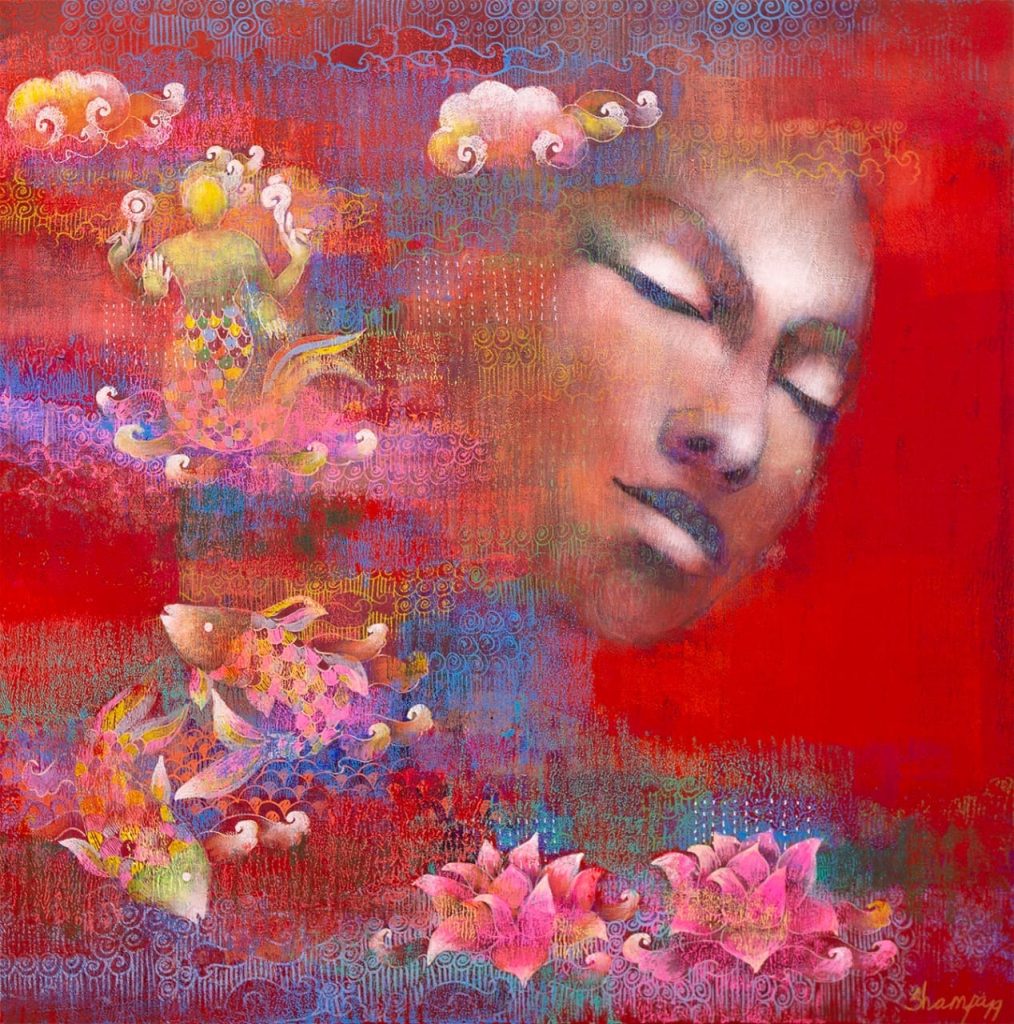Krispin Joseph PX
Cyanotype is now a familiar technique to transform something into a bluish tone with random abstract patterns as their thin strands of seaweed. Cyanotype is used for many and various reasons by photographers and artists, creating a visual experience that is only occasionally part of fine art visual culture. These two century-old picture-copying practices have grown enough to fill the exhibition walls. Cyanotype has a history and legacy as much as photography.
After the invention of the Cyanotype, English Botanist and photographer Anna Atkins used this technique for plant illustration, and now that collection is a celebrated and highly-treasured album of botanical photograms. We can find the history of the Cyanotype and photography in the same route, which evolved in a similar terrain of human taste and experimentation. What we see in Anna Atkins’s Cyanotype is a botanical use of this method, and what we see in fine art photography is the use of this method’s artistic differentia.
If we look at Anna Atkin’s Botanical documentation of plants, it gives a clear view of the quality of the negative tone, which helps architecture make blueprints to understand the landscapes clearly. What gives Cyanotype is make a barrier for Cyanotype: that is colour ‘Blue’. Cyanotype only gives us blue, so some use this technique to make something blue, and the negative tone is only sometimes welcomed. Cyanotype’s history started with Prussian blue in 1706, and that epic travelogue reached many historical necessities and events. These techniques tell us about the emergence of new methods into human life and the practices that become the history of contemporary practices.
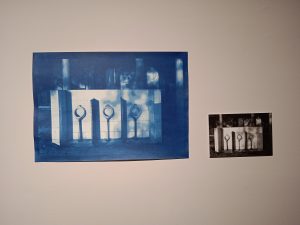
Cyanotype or photography is a historical subject and method, and they belong to our contemporary life and the historical development of human culture.
An exhibition of Cyanotype Prints by Emmanuel Lenain presented by Museo Camera carries back the heritage of Cyanotype into the dialogues. Emmanuel Lenain is a French professional diplomat who has worked on peace negotiations, advised two prime ministers, and served in the US (New York and Washington) and China (Beijing and Shanghai) before being appointed Ambassador to India. Emmanuel Lenain is also a prized photographer whose work-all in black and white, with a preference for silver gelatin has received many publications and exhibitions.
Emmanuel Lenain’s works are displayed in Museo Camera, and the photographs and Cyan0type are exhibited together. He tells about his works:
“There is a charm in the so-called old photographic process created and used in the nineteenth century. In an era of digital perfection, when images can be eternally retouched, it is refreshing to let go, let nature work slowly, and accept its limitations. Each Cyanotype print is unique, bearing the mark of such random little variations as the grain of the paper, the concentration of the developing bath, irregular strokes of the brush applying the coating solution, and the scratches that the dust flying in the lab that day leaves on the negative. But imperfections acquire their seduction, and craftsmanship avenges the industry”.
“Among these processes, Cyanotypes stand apart with their rich blue layers of indigo and cobalt- the famous Prussian blue- proffering an image at once graphic and tender. It forces one to return to the essence of photography: respect for light. For it is light that almost miraculously dictates the image”.
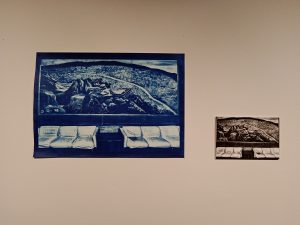
“The Cyanotype process also imposes a most welcome creative constraint on the photographic practice. Not all negatives yield good images when printed using this technique. Highly contrasted and structured images fare much better. And this is for the better since art can only grow with constraints. Artists have to play with the medium and experience its limits. Otherwise, their work needs more energy. If the artist is audacious, the medium will resist, and from their struggle will arise an exciting work. Some painters have gone so far as to paint a white square on a white background or lacerate the canvas. Some photographers have chosen to systematically overexpose, scrape their negatives, or write on them: the stronger constraints, the better the work. The most severe constraint of all, censorship, has resulted in such masterpieces as Les Fleurs du Mal because it forced artists to be ironical and play with codes”.
Emmanuel Lenain’s exhibited photographs are taken from different parts of India. These photographs narrate the urban settings of India and the people who live in that urban settings. The urban environment of India has merged with the heritage of that setting, and Lenain’s body of works carries them into a Cyanotype visual experience. From where can we start to engage with images and see beyond the images? Lenain’s projects about the photographic-cyanotypic intervention through contemporary life and routines, an ‘exotic’ visual experience of contemporality . We need to look to ourselves to invent ourselves and rediscover ourselves.
If we bring Baudelaire into the discussion about the modern man, ‘he is not the man who goes off to discover himself, his secrets and his hidden truth; he is the man who tries to invent himself. This modernity does not ‘liberate man in his being’; it compels him to face the task of producing himself.’ Are we in a modern world or a postmodern or post-truth world? How can we find ourselves from ourselves, and what are the differences between these two things?
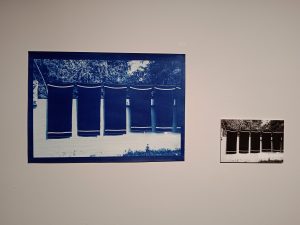
Emmanuel Lenain’s works tell about India, human life and life patterns from the spectator’s point of view. Many photographs are the ordinary objects and things in a human settlement: letterboxes, Urinal corners, books, construction sites, statues on the corner, a Gandhi statue, a top view of urban architecture, roadside views of the street and other things. Photographers roaming around the city life are visible in the exhibition. The Cyanotype technique gives these events a layer of technical advancement and progress that builds and forms in the artwork.
Artworks create an ambience that has never been noticed as a social phenomenon and has never produced something against the taste of that time. These photographs and the show are a continuous endeavour of artistic practice through a medium combined with other mediums.


